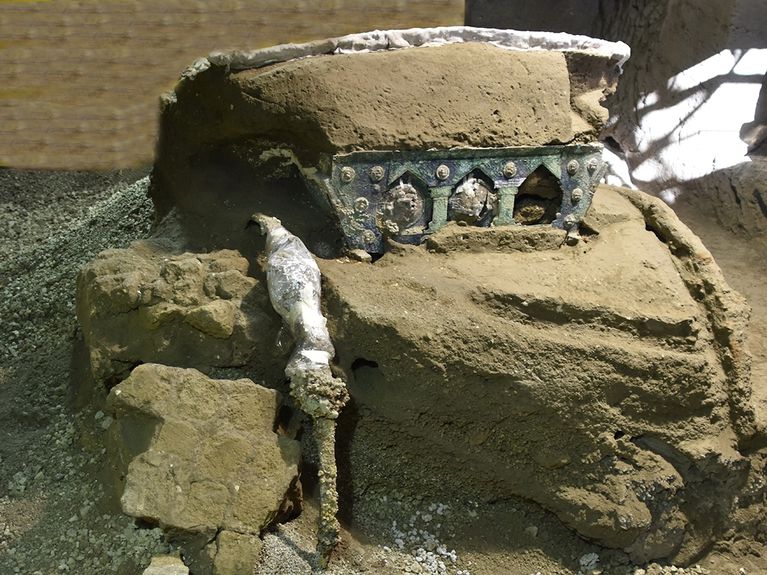A ‘Lamborghini’ Of Chariots Is Discovered At Pompeii. Archaeologists Are Wowed
Researchers at Pompeii have confirmed the discovery of an intact ceremonial chariot from a villa near the famed Italian archaeological site, calling it an “exceptional discovery.” The chariot was identified as “an exceptional discovery” that “has no parallel in Italy thus far,” according to the announcement made on Saturday.

Officials also stated that the chariot is kept in remarkable detail, including the four iron wheels, metal armrests and backrests, and a bench mounted on top of the frame that could seat one or two people.
Notably, the chariot is adorned with metal medallions depicting satyrs, nymphs and cupids, suggesting the possibility that it may have been used in marriage ceremonies.
“I was astounded,” said Eric Poehler, a professor at the University of Massachusetts Amherst who has a speciality in traffic in ancient Pompeii. “Many of the vehicles I’d written about before … are your standard station wagon or vehicle for taking the kids to soccer. This is a Lamborghini. This is an outright fancy, fancy car.”
Archaeologists worldwide expressed similar excitement Saturday over the announcement. “Still wrapping my head around the latest incredible discovery,” wrote Sophie Hay of the University of Cambridge. “My jaw is on the floor just now!” wrote Jane Draycott of the University of Glasgow.
A single exclamation point did not suffice for historian and writer Rubén Montoya, who wrote in Spanish that Pompeii “does not stop giving us surprises!!!”
The ancient city of Pompeii has been the subject of fascination and archaeological digs for hundreds of years. It was buried in volcanic ash from Mount Vesuvius nearly 2,000 years ago, a disaster that preserved in incredible detail the buildings and ephemera of the city and even the shapes of the bodies of the Romans who once walked the city’s streets.
According to Italian authorities, the chariot survived the eruption and the intervening years because it was stored inside a portico.
The eruption caused the walls and ceiling around it to collapse under the weight of volcanic ash. In recent years, looters had dug tunnels on either side. But “miraculously,” officials say, the chariot was spared.
While previous excavations had yielded everyday vehicles used for travel and work, this ceremonial chariot is the first find of its kind to be discovered, explained Massimo Osanna, the outgoing director of the site.
“It is an extraordinary discovery for the advancement of our knowledge of the ancient world,” Osanna said in a statement.

Every so often, some new discovery from Pompeii prompts excitement from historians about the glimmer of understanding it reveals about the residents of the ancient world: their fast-food preferences, how their taverns were decorated, their unlucky deaths.
Even among those semi-frequent discoveries, Poehler says, this chariot stands out.
“This is precisely the kind of find that one wants to find at Pompeii, the really well-articulated, very well-preserved moments in time,” he said. “And it happens to be in this case an object that is relatively rare despite its ubiquity in the past.”





